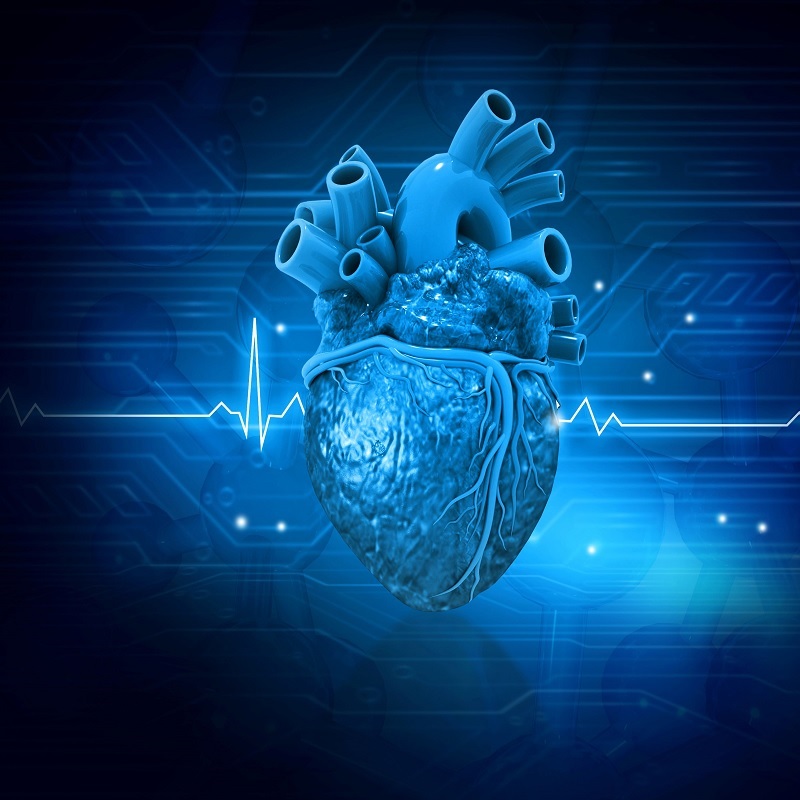A recent Interface Focus issue highlights the current areas of research and outstanding questions for addressing health issues associated with cardiac arrhythmias.

Disruptions in the heart’s electrical activity can lead to serious health problems. We spoke to Dr Jichao Zhao at the University of Auckland, the organiser of a new Interface Focus issue on this topic, to find out some of the opportunities and challenges for advancing research, and developing new diagnostic tools and treatment.
1) Please can you briefly explain what is meant by cardiac arrhythmias?
The heart usually beats in a regular rhythm to pump blood efficiently, but when there's a disruption in the normal electrical signals, it can lead to cardiac arrhythmias. This can cause the heart to beat too fast, too slow, or with an irregular pattern. Cardiac arrhythmias refer to irregular heartbeats or abnormal patterns in the heart's electrical activity. Cardiac arrhythmias can range from mild and harmless to serious and life-threatening, impacting the heart's ability to pump blood effectively and potentially leading to various health issues.
2) What are the challenges for bridging the gap between bench research, and clinical diagnostics and treatments?
The major challenges are twofold. Firstly, effective collaboration between bench researchers, clinicians, and other healthcare professionals is essential but can be challenging due to differences in language, priorities, and work environments. The time and resources required for bench-to-bedside translation can be significant. Due to the current clinical workload in developed countries, clinicians are already overwhelmed, and they simply do not have the time to commit to clinical research, even though they are keen to be part of it. Secondly, translating discoveries from the laboratory to real-world clinical applications can be complex. What works well in controlled experiments may not always translate effectively into practical clinical settings. For instance, patients in clinical settings are diverse, with variations in genetics, lifestyle, and other factors. Bench research often involves more homogeneous populations, making it challenging to apply findings universally.
3) How was your experience organising an Interface Focus issue?
Organising this Interface Focus issue was made much easier for me, given the strong support from the journal, particularly the editorial team, led by Dr Tim Holt. This year marked the first post-COVID period, and researchers were in catch-up mode. The deadline for final submission was delayed a couple of times, and the journal made a significant effort to accommodate our needs. I feel that all submitted papers received very comprehensive reviews and comments within a short window from the referees. The system was very efficient, and I am thoroughly impressed.
4) What are the some of the outstanding research questions that should be addressed in this field?
In the field of cardiac electrophysiology and arrhythmias, several outstanding research questions remain that could significantly contribute to our understanding and treatment of these conditions. Some of these questions include:
a) Molecular basis of arrhythmias:
• What are the precise molecular mechanisms that initiate and sustain different types of arrhythmias at the cellular level?
• How can targeted therapies be developed to modulate specific molecular pathways involved in arrhythmogenesis?
b) Individualized treatment approaches:
• How can personalised medicine approaches be applied to tailor treatments for individuals based on their specific genetic, molecular, and clinical characteristics?
• What factors contribute to the variable responses to anti-arrhythmic medications and ablation treatment among different patients?
c) Understanding atrial fibrillation progression:
• What factors contribute to the progression of atrial fibrillation from paroxysmal to persistent forms, and how can this progression be halted or reversed?
d) Impact of comorbidities:
• How do comorbid conditions, such as diabetes, hypertension, and others, influence the development and progression of arrhythmias, and how can these interactions be targeted for treatment?
e) Integration of computational models:
• How can computational models and simulations be refined to better represent the complexity of cardiac electrophysiology, aiding in drug development and treatment optimization?
Image credit: Human heart anatomy. Medical concept. 3d illustration. Rasi Bhadramani. iStock.
Keep up to date with the latest issues of Interface Focus by signing up for article alerts, and browse previous theme issues on the journal website.

